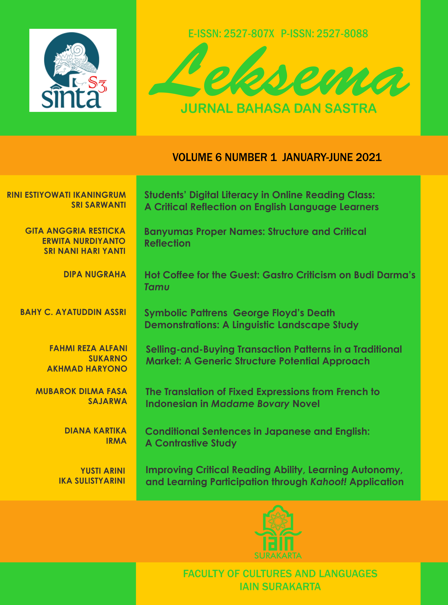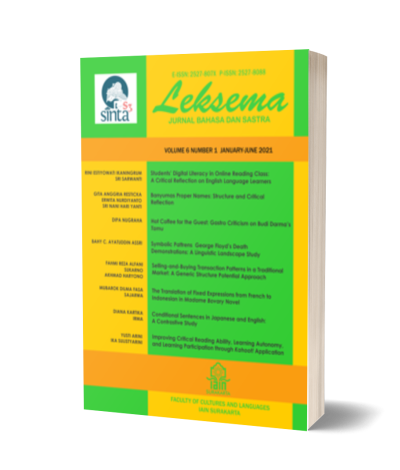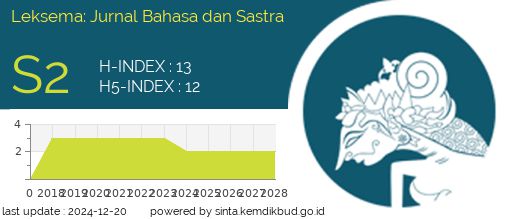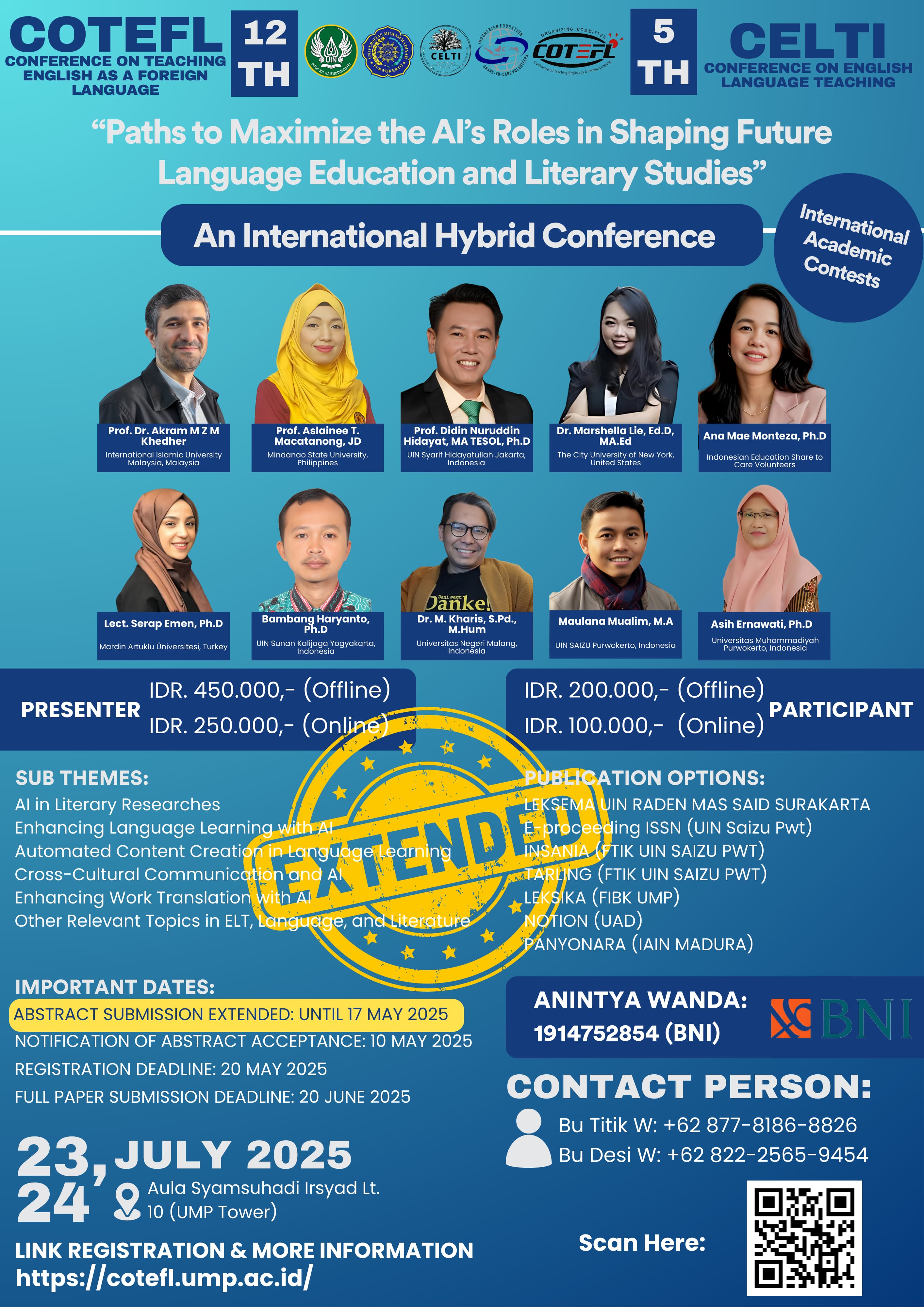IMPROVING CRITICAL READING ABILITY, LEARNING AUTONOMY, AND LEARNING PARTICIPATION THROUGH KAHOOT! APPLICATION
DOI:
https://doi.org/10.22515/ljbs.v6i1.3477Keywords:
Kahoot! application, critical reading ability, learning autonomy, learning participationAbstract
This research is aimed at finding out whether the use of Kahoot! application can increase the students’ critical reading ability, learning autonomy, and their learning participation in Critical Reading learning process. This research was conducted at the English Education Program Study of IAIN Surakarta involving 36 students as the research subjects. This classroom action research consisted of 2 cycles; 5 meetings for each cycle, with 1 pre-test and 2 post-tests. Based on the research results, it can be found out that the mean of pre-test scores is 25.56, the mean of post-test 1 is 44.39, and the mean of post-test 2 is 66.17; it means that the use of Kahoot! application can increase the students’ critical reading ability. The results of the questionnaire consisting of 9 indicators show that the use of Kahoot! application can increase the students’ learning autonomy. Furthermore, results from observation also show that the students’ learning participation increased during the learning process when Kahoot! application was applied. The students also assumed that the use of Kahoot! application can increase their learning participation.
Downloads
References
Alyousef, Hesham. 2006. “Teaching Reading Comprehension to ESL/EFL Learnersâ€. Journal of Language and Learning 5 (1): 63-73
Bergmark, Ulrika & Susanne Westman. 2018. “Student Participation within Teacher Education: Emphasising Democratic Values, Engagement and Learning for a Future Profession.†Higher Education Research and Development 37 (7): 65-1352. https://doi.org/10.1080/07294360.2018.1484708
Caicedo, Jefferson. 2015. “Teacher Activities and Adolescent Students’ Participation in a Colombian EFL Classroom.†Profile: Issues in Teachers’ Professional Development 17 (2): 149-63. https://doi.org/10.15446/profile.v17n2.48091
Chiang, Hui-Hua. 2020. “Kahoot! In an EFL Reading Class.†Journal of Language Teaching and Research 11 (1): 33. https://doi.org/10.17507/jltr.1101.05
Chotimah, Ima Chusnul & Muhammad Farhan Rafi. 2018. “The Effectiveness of Using Kahoot As a Media in Teaching Reading.†Jurnal ELink 5 (1): 19 https://doi.org/10.30736/e-link.v5i1.44
Coronado, Daniela Medina, Mercedes Maria & Nagamine Miyashiro. 2019. “Autonomous Learning Strategies in the Reading Comprehension of High School Students Estrategias de Aprendizaje Autónomo En La Comprensión Lectora de Estudiantes de Secundaria.†Propósitos Y Representaciones 7 (2): 59-134
Lan, Yu-ju. 2018. “Technology Enhanced Learner Ownership and Learner Autonomy through Creation.†Educational Technology Research and Development 66 (4): 62-859. https://doi.org/10.1007/s11423-018-9608-8
Moore, Jerilou J. 2016. “The Simplicity and Complexity of Reading Comprehension.†International Journal of Business and Social Science 7 (6): 20-26. https://ijbssnet.com/journals/Vol_7_No_6_June_2016/3.pdf
Mulumba, Mathias Bwanika. 2016. “Mathias Bwanika Mulumba, ‘Enhancing the Reading Culture among Language Education Graduate Students through Emerging Technologies.†Technology, Innovation and Education 2 (1). https://doi.org/10.1186/s40660-016-0014-4
Omar, Nurul Nisa. 2017. “The Efffectiveness of Kahoot Application Towards Students’ Good Feedback Practice.†PEOPLE: International Journal of Social Sciences 3 (2): 62-2551. https://doi.org/10.20319/pijss.2017.32.25512562
Plump, Carolyn M & Julia la Rosa. 2017. “Using Kahoot! In the Classroom to Create Engagement and Active Learning: A Game-Based Technology Solution for ELearning Novices.†Management Teaching Review 2 (2): 58-151. https://doi.org/10.1177/2379298116689783
Sabandar, Grace Nathania Clara, Noldy Richard Supit & Effendy Suryana. 2018. “Kahoot!: Bring the Fun Into the Classroom!†IJIE (Indonesian Journal of Informatics Education) 2 (2): 127. https://doi.org/10.20961/ijie.v2i2.26244
Shirzad, Fereshteh & Saman Ebadi. 2020. “Developing a Learner Autonomy Questionnaire in English as a Foreign Language Reading Comprehension.†Teaching English Language 14 (1): 273-307
Suacillo, Carine Iries M, Song Eun Um, Joeseph M Velasquez, Hannah Nicole R Villaflores, & Maria B. Cequena. 2016. “Critical Reading Strategies, Reading Comprehension and Writing Performance of Esl College Students: A Correlational Study.†International Journal of Advanced Research 4 (9): 610-23. https://doi.org/10.21474/ijar01/1526
Susak, Marija. 2016. “Factors That Affect Classroom Participation.†http://scholarworks.rit.edu/theses/9370
Taglieber, Loni Kreis. 2000. “Critical Reading and Critical Thinking The State of the Art.†Ilha Do Desterro A Journal of English Language, Literatures in English and Cultural Studies 0 (38): 15-37
Triyanto. 2019. “Understanding Student Participation within a Group Learning.†South African Journal of Education 39 (2): 1-8. https://doi.org/10.15700/saje.v39n2a1629
Zarei, Abbas Ali & Kobra Gahremani. 2010. “On the Relationship between Learner Autonomy and Reading Comprehension.†TELL 3 (10): 81-99. https://www.researchgate.net/publication/312472432_On_the_relationship_between_learner_autonomy_and_reading_comprehension
Downloads
Published
Issue
Section
License
The copyright of the received article shall be assigned to the publisher of the journal. The intended copyright includes the right to publish the article in various forms (including reprints). The journal maintains the publishing rights to published articles.
In line with the license, the authors and users (readers or other researchers) are allowed to share and adapt the material only for non-commercial purposes. In addition, the material must be given appropriate credit, provided with a link to the license, and indicated if changes were made. If authors remix, transform or build upon the material, authors must distribute their contributions under the same license as the original.







